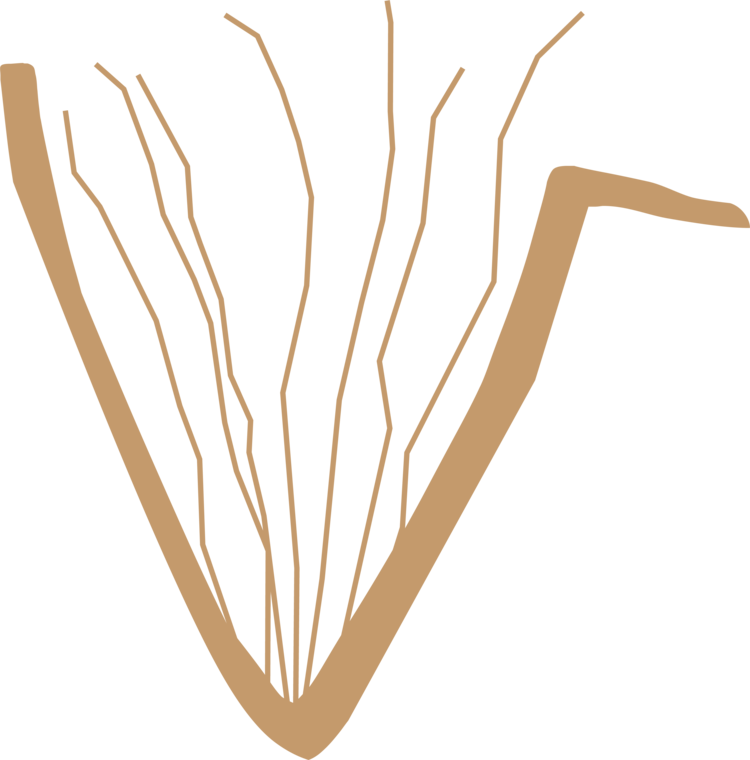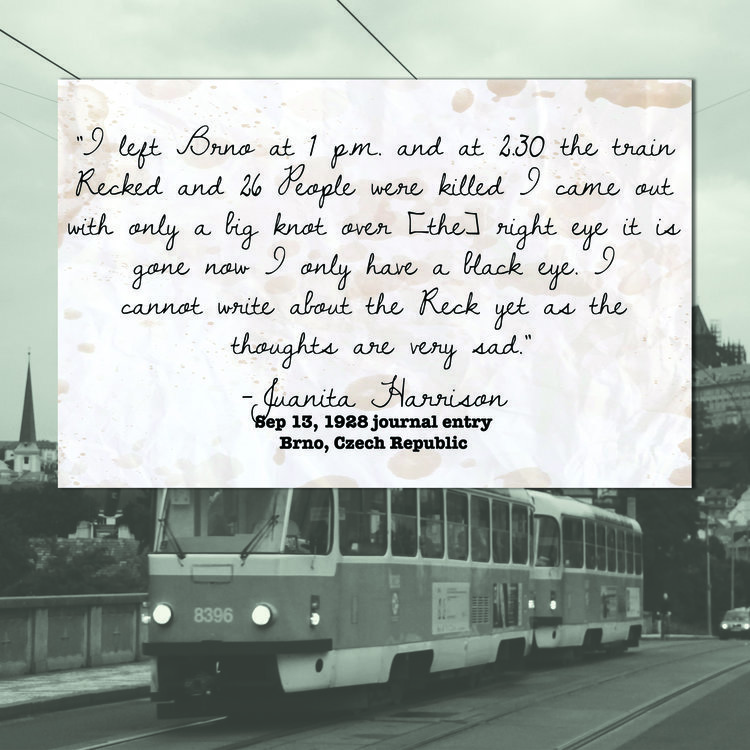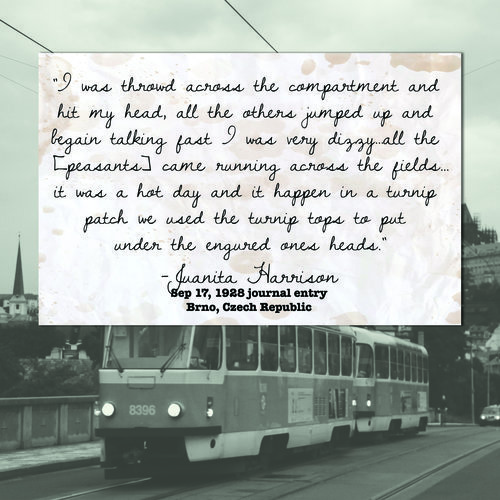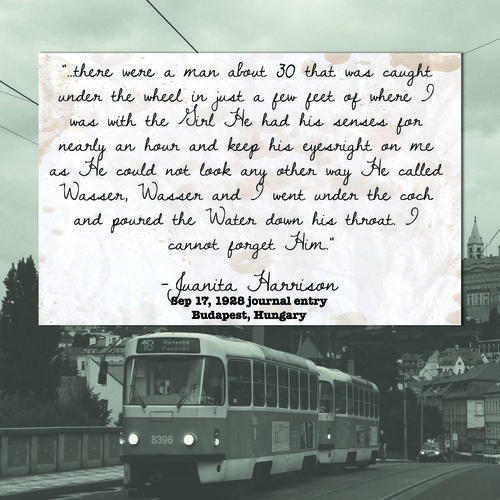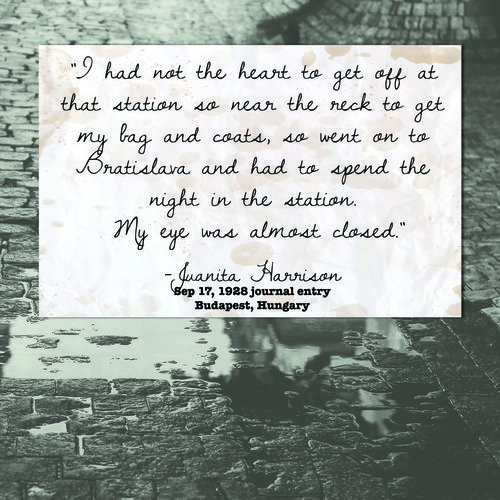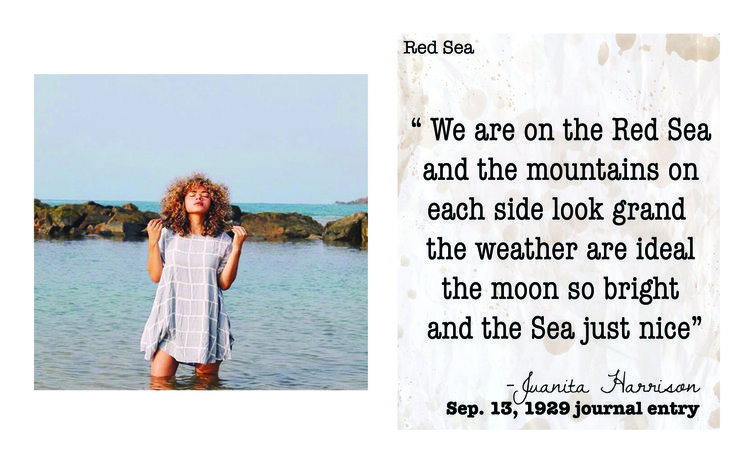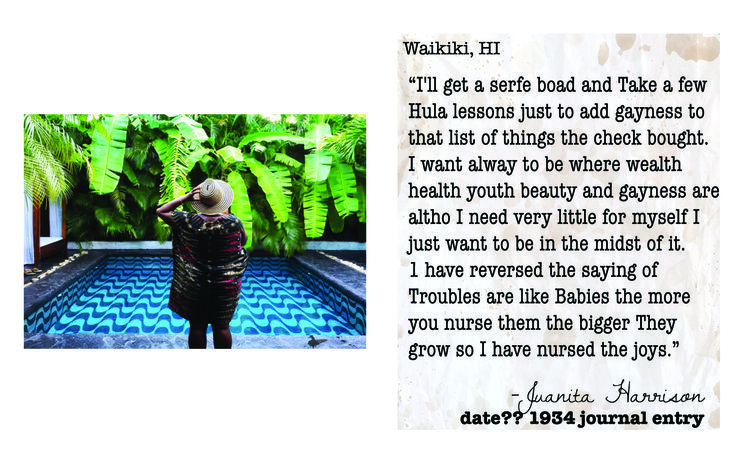Juanita Harrison, 3
The unusual, the interesting, the strange and the curious--all of it needs to be documented. But so must the tragic, the horrid, the anguish of what has happened and what we have survived. This is where I turn to Juanita Harrison's awareness of the necessity of performing a self-examining form of journalism, as best exemplified in the chronicling a severely devastating event during her revelatory travels. Her simply-worded testimony recounted the morbid details of what she had witnessed and the heaviness she was feeling in processing the magnitude of pain, seeing death and blood, and the triumph and tragedy of surviving horror.
Harrison demonstrated the importance of exercising our agency by interrogating that which has traumatized us, potentially maiming our continuance and promising to reverberate through our lives. Quite often I’ve heard teastained women verbally recount their traumas while also admitting that they haven't written/ can't write about it in a journal. But there's something to be said about processing what has dared to touch us, to disrupt us and make the violent exchange of experiencing upon us and our having to carry the memory. Journaling in the post-trauma space takes back our power…
In September of 1928, while departing the Czech Republic, Juanita Harrison’s train wrecked. There were almost 30 casualties and many injured but fortunately the teastained diarist survived with only a swollen shut black eye.
I admire Juanita’s journal entries recollecting this traumatic event. It’s not just that she processed the experience but that her near-visceral compulsion to document it until she’d comprehensively unpacked her heaviness is almost tangible to the reader. I can literally feel Juanita writing herself into healing, out of being overwhelmed, pushing herself to process and remember while pulling from herself from the beast from whose mouth she'd just been spat.
After the wreck Juanita Harrison spent the entire day of September 17, 1928 writing her way through processing it. Her candor in sharing about her possible PTSD and her honesty with possibly not being OK--these are such priceless journaling moments which I am proud to have as artifacts for us today.
This is what it looks like for one Journeying Soulfully to push through feelings and retain agency in trauma by not relenting the power of her narrator's point of view despite what has happened. Note that I am not saying to not give yourself the proper space (Juanita took 4 days before she could pick up her pen and really process what she'd survived, seen...), but I am saying that there is no power like the power of writing the story of what has happened to you. You're asserting yourself as the one in control of speaking about incidents and circumstances, rendering those voiceless in influencing your continuance. This is the power of journaling as a teastained woman.
Bahamian Artist Philece R. in Versailles, France.
Celeste in Cape Three Points, Ghana.
Another grave subject that Harrison unknowingly documented happened when she was traveling via ship to Egypt, Sri Lanka, Japan and returning to America via landing on Hawaiian shores: little did this teastained nomad know that her capriciously-booked trans-Indian voyage was REVERSING THE TRANSATLANTIC SLAVE TRADE ROUTES.
Wait.
Wait.
Wait.
Operating as "the dream and the hope of the slave" this woman CHOSE the ship that would take her across the ocean of her choice, she chose her cabin and sleeping arrangements, and she booked the voyage with her passport. I don't even think a slave could ever dream of such a vengeance. there's also a surreal moment of pause where Harrison sits on the shores of the Red Sea. It's as if she's the "freed slave," basking in having crossed over to the other side of the sea post-enslavement; having her enemies on the other side of the watery expanse before her, back in America.
Moments such as this one remind me that even when we don't feel like prophet, medicine woman, teller, or oracle, this is exactly how we are functioning when we document our lives. To think that when given the opportunity to voyage in the direction of her choice this Black woman obliviously operated in both redemption and futurism by going opposite of the direction chosen by European slave traders a couple hundred years before her. Her journey healed a layer of wounds for we as a people...this is why her documentations are necessary.
“we have to fight for the space we know we’re meant to take up in this world. throughout all history white men have colonized space after space, spilling their seed and infected ideologies about humanity and world systems along the way; bringing patriarchy and vitriolic caste systems with them. here i present to you juanita harrison: a woman who voluntarily (though unknowingly) reversed the [slave] trade and travel routes of these white men, who performed her own reverse middle passage across 2 oceans, who reclaimed her narrative, and her self and who wrote the book all at once.”
I truly wish I could share all of Juanita Harrison's entries, but you can read them for yourself here at Archive.org.
Juanita's story has a beautiful, suitable ending. She retired in Hawaii and soon after published an article about her travels for the Atlantic Monthly before working on her book, My Great, Wide, Beautiful World.
When she received the royalties check for her freelance writing work, she purchased not a home, but a tent which she named Villa Petit Peep. How appropos. The tent was custom built according to Juanita's requirements that she be able to pick it up and go whenever and wherever she pleased without having to be incumbent upon anyone for lodging. In the end Juanita invested in herself by housing herself in a symbolic and literal vehicle of freedom, self-ownership,
and mobility. A constant reminder that at any moment she could go off wherever she very well felt like being, owing the world nothing except her footprints...
In the end, Juanita Harrison chose to be free.
“we are living in a great, wide, beautiful world waiting for us to create more worlds. our narratives are blueprints”
Textile designer Shade Akanbi in Nicaragua.
1/2 of twin duo Mataano in Caye Caulker, Belize.
Had you have told me that a woman like Juanita Harrison existed I would have believed you as if that she was an allegorical, or mythological fabled creature; some sprite conceptualized to encourage peoples of color to believe they can cross borders to explore themselves in the "other".
Or I wouldn't have believed she existed at all.
Thank God she kept a journal.
